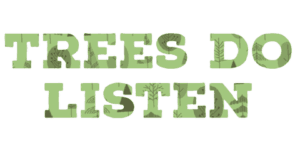It’s official: Zero Waste has changed from a trend to a movement! The zero waste movement is here to stay. If you are new to zero waste, fret not. Zero waste for beginners is simple. There are many easy zero waste products to get started. You can make a simple zero waste action plan for your home.
I believe that education is the first step in making changes. But how can we avoid getting caught up in the doom and gloom necessity of it? How can we make it a positive and fun thing to do? Luckily there are always people a few steps ahead of me with wonderful solutions and resources. I have done plenty of research and I will share my beginner plan to reduce the waste from my home – just incase you are a step or two behind me.
Observe your household waste
I’ll start at the beginning. Last year, I thought it would be a good idea for my family to investigate the waste in our home as part of a Clutterless Kids experiment. When I first brought the idea to my family, they all unanimously said “no”. That sounded boring and difficult. This aversion to evaluating our daily practices intrigued me and I thought it would be worth at least investigating. We did not do an experiment last year. I did however, start researching and collecting data on our household waste over the last year. That included recycling, garbage, trips to dump and donations. I simply took pictures each time I donated or took a trip to the recycling centre or transfer station. Now I have a better idea of the regular items I throw out.
As I read about this zero waste lifestyle, I started to notice waste and packaging all around me. The more I researched, the worse I felt. Everywhere around me, I saw all of the unnecessary packaging and “compostable” disposables used in stores, restaurants and coffee shops. Convincing others to change the way they consume felt hopeless because the choices are difficult. It is a good thing there are so many people sharing their solutions to household waste.
Amazing Zero Waste Resources
My search for becoming less wasteful in our home immediately brought up a wonderful resource, “Zero Waste Home” by Bea Johnson. Bea and her family of 4 only produce one small mason jar full of waste per YEAR. Her lifestyle has been going strong for more than 10 years. She has a great website, fascinating videos and a very helpful book. And Bea is not alone.
There are many other great zero waste resources like Trash is for Tossers, Going Zero Waste and Recycle BC. If you don’t have time to browse through these resources, you can subscribe to treesdolisten. I will be posting what I learn from my research and experiences implementing zero waste ideas.
What is a Zero Waste Action Plan
I don’t want to focus on the threat to our world’s dwindling resources. I want to look at the amazing solutions that are sweeping across the world. There are many examples of families making radical changes to the way they eat, shop, clean and work that are inspirational. Even cities and large companies around the world are making their “Zero Waste Action Plan”. So what can the general population do to help? What is a good zero waste for beginners first step? Let’s start by making a Home Zero Waste Action Plan.
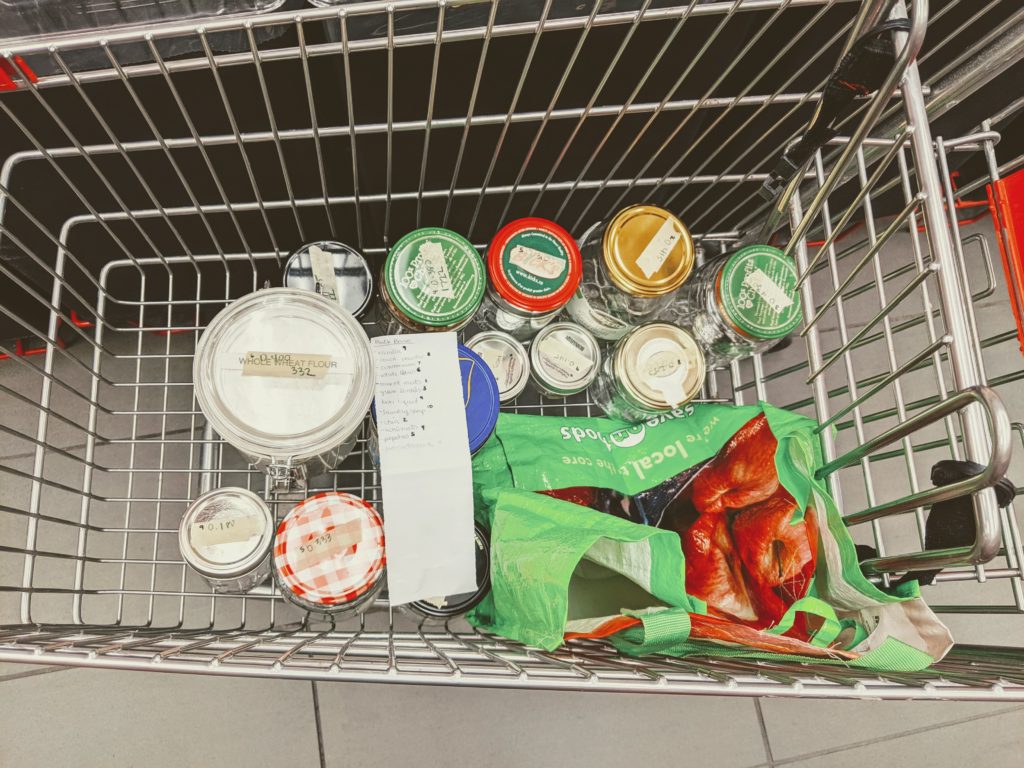
Don’t pay too much attention to the word “zero” in zero waste. That is the ulitmate goal but the I think the term should really be “barely any waste”. Zero waste is a subjective term. My current zero waste goal is to significantly REDUCE the amount of waste that I have been regularly sending to the landfill AND recycling facilities.
Currently I put 1 small bag of garbage out to the curb each week (bread bag sized). I have plans to make more changes so that I will not need to do this on a weekly basis. But this small garbage bag each week is a big improvement from what we put out a few years ago. And it is a huge improvement from a time before curbside recycling when my family had multiple large garbage bags each week. We are getting there!
Does Recycling Count as Waste?
Did you know that a 2019 study identified that only 9% of the plastic sent to recycling facilities in Canada IS actually recycled? 9%! That means that 9 weeks out of 10, your recycling goes to the landfill or gets incinerated. I used to feel pretty good about myself for taking the time to clean and separate this material thinking it was all going to be turned into a really cool toy or more packaging. Unfortunately that is not the case.
A zero waste homes don’t send anything to the landfill (in the form of garbage) but also do not have anything to recycle. An incredible amount of energy is involved in recycling. Energy to create the packaging in the first place, sort at home, curb side pickup, transportation, facility sorting, compacting, transporting, power / water / materials to actually recycle, transporting again etc. There is a potential market for all of these materials but only a limited amount of it is needed. If the material is actually needed and recyled into another product, there is a limited amount of times that the material can be recycled. So even when we purchase items made of recycled plastic, chances are that they cannot be recycled again.
Ten years ago, we felt really great about building our deck with a composite product that included recyled plastic. Our deck is amazing BUT when we are ready to replace the deck we have to throw this material into the landfill. I didn’t see that coming! Our municiple facilities are not able to separate this composite material, so it cannot be recycled. When the time comes to dismantle this deck, we better find something else to build with the material.
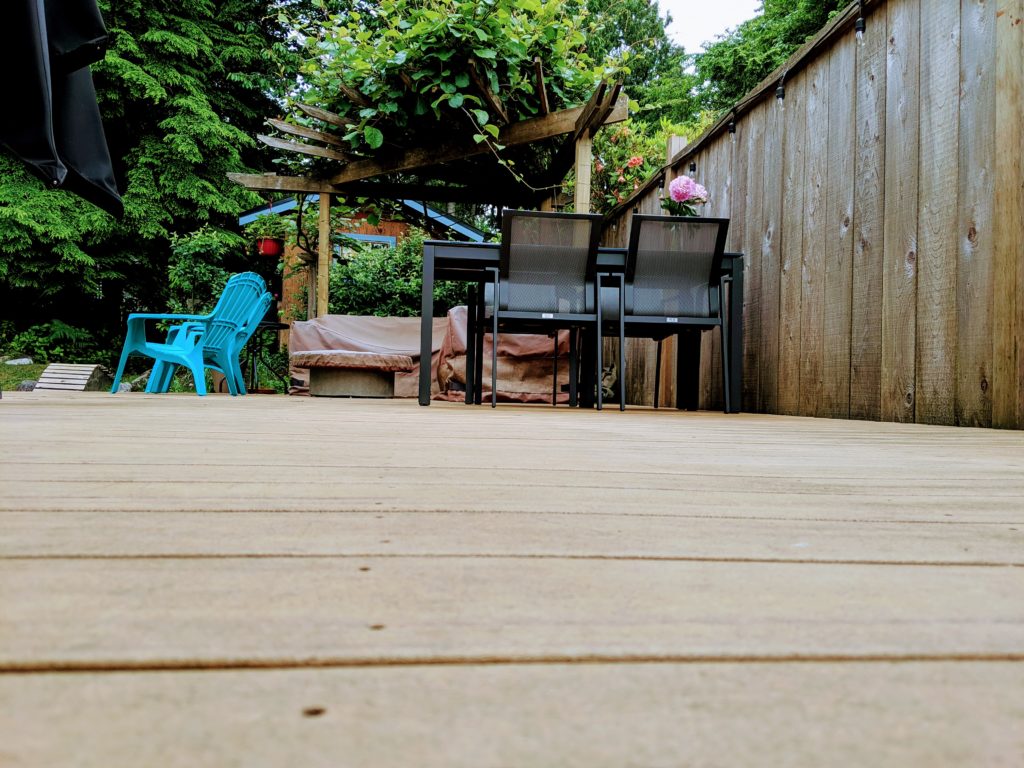
How Do I start?
I already had a system for separating waste in my home. For our curbside collection, we have:
- garbage (2 kitchens, 3 bathrooms, yard)
- paper recycling (boxes, card board, paper)
- glass recycling
- plastic recyling
- city compost (yard trimmings and food scraps)
We also collect other types of recycling that we bring about every 2 months to the recycling depot:
- batteries
- plastic bags
- crinkly bags (like chip bags, cereal bags)
- styrofoam (YUK!)
- light bulbs
- broken electronics
- paint buckets
I was shocked when I counted the number of plastic bags our family had after 2 months. Even though I always used my cloth shopping bags and never took a plastic bag from the produce section. I am that person at the checkout with oranges rolling around and lettuce getting the belt wet. As I awkwardly apologize, the cashier smiles and dries it with a disposable paper towel. I hadn’t even considered the bread bags I was getting with each loaf of sliced bread, bagels or pita. The bag that carrots and spinach comes in. The plastic wrapped around my cucumbers and cauliflower. I can certainly improve this and I don’t think it will be that difficult. I will just select the produce that is unwrapped when I have the option. Good bye to prewashed spinach!
I’ve decreased the amount of styrofoam collected by being very careful with my choices at restaurants. I always bring food storage containers when I eat at a restaurant. There are many restaruants that will happily fill my containers when I order take out. But I usually have to make my order at the restaurant (not over the phone) and wait. It also helps the restuarant if I pick up my order before the busy times. It takes a bit of forward thinking but overall it has been pretty easy to do.
Great Zero Waste Products
Zero waste for beginners can start with a few easy changes. These are products that I’ve been using that have improved my waste situation:
- cloth produce / bulk food bags (replaced bulk food plastic bags)
- silicon baking mat (replaced parchment paper)
- beeswax food wraps (replaced plastic wrap)
- lunch kits and snack bags (replaced single use plastic snack bags)
- wide mouthed mason jars
- glass and steel food storage containers
- cotton shower curtain (I love this shower curtain, so easy to wash)
- pillow case for bread that I purchase from a bakery
I have learned to consistently shop with my cloth shopping bags and produce bags. When I get my food home, I empty the bulk items into jars and put the cloth bags into the wash. The mesh ones air dry very quickly. Then I immediately put them in my cloth shopping bags and back into my car. I’ll need to revisit this as I use my bike more often for groceries but for now I drive to my bigger weekly shops.
I experimented with bringing containers for meats and cheeses. My experience was awkward and my request refused at several of my favourite shopping spots (more on this later). I found a few butchers that will sell me chicken in my own container. For now I just usually buy packaged cheeses.
If you are just starting out, I recommend that you take a look at what you are putting in the garbage before you tie it up and bring it to the curb. Perhaps some of it can be avoided by making different choices at the store? Perhaps some of it can be repurposed, repaired or composted. Take a picture of it so that you can investigate after a few weeks of photos.
Then take a look at your recycling. Snap a photo each week when you put it to the curb. Take a photo of it as you drop it off at the recycling depot. Count the pieces of styrofoam and plastic bags.
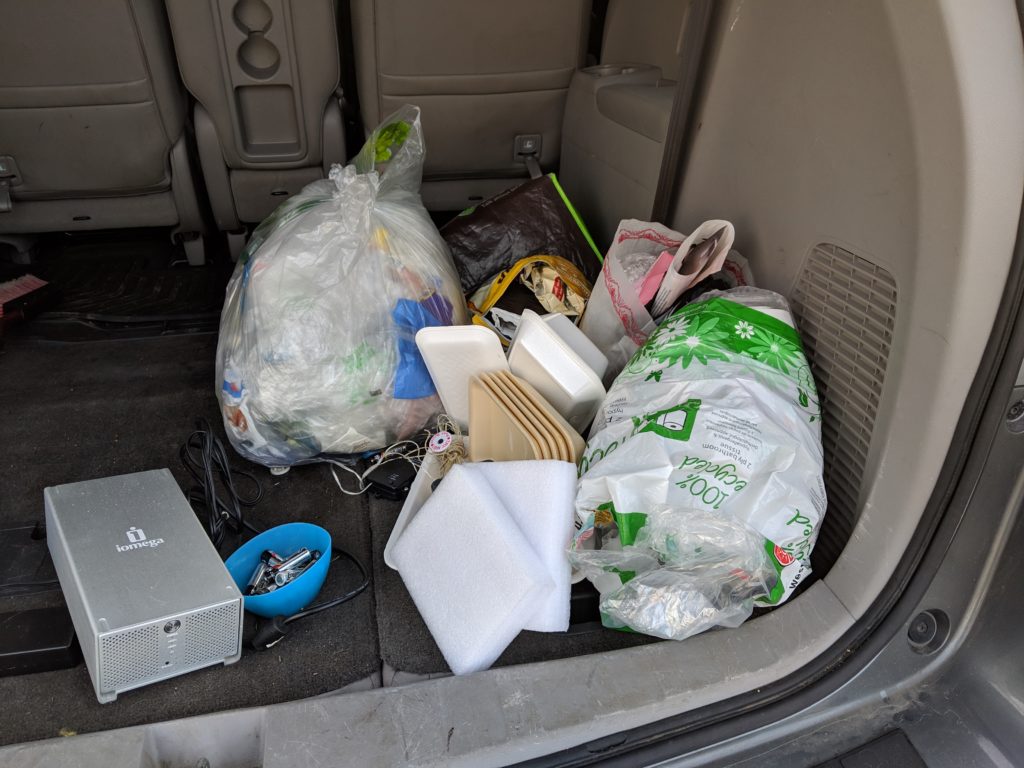
After a few weeks of collecting data (it sounds crazy but it really doesn’t take that much time), you are ready to evaluate and make some changes. What are the reoccuring items in your waste? Look it up and see if there are other options available to you.
Home Zero Waste Action Plan
My home zero waste plan to reduce the amount of recycling that I put to the curb and take to the special recycling depots is a work in progress. The main action to take here is: refuse to bring it into my house in the first place. It is difficult to avoid the packaging that comes with almost everything we purchase but more and more people are doing it. I believe it is going to get easier with time just like learning to recycle was difficult at first but got easier with time.
My personal goals for this year are:
- find a store that will allow me to purchase raw chicken in my food container
- shop at the farmers martket for produce (usually no plastic packaging)
- make a weekly meal plan and shop once / week instead of going every day
- buy cheese from the counter in my container
- use cloth instead of paper towels
- handkerchief instead of tissues
- improve the zero waste kit for my car (add utensils, different size containers)
- try home made toothpaste
- switch to bamboo tooth brushes for the whole family
- try buying second hand clothes first
- use scrub brush instead of sponges
- make my own laundry detergent
- say “no thanks” to receipts at the grocery store
- experiment with alternative feminine hygiene products
- switch to bar soap or refill my pumps with liquid soap I can purchase in my own jar
- shop at stores that have products without packaging like NADA and Nourish Market
- use our backyard compost as well as the city compost
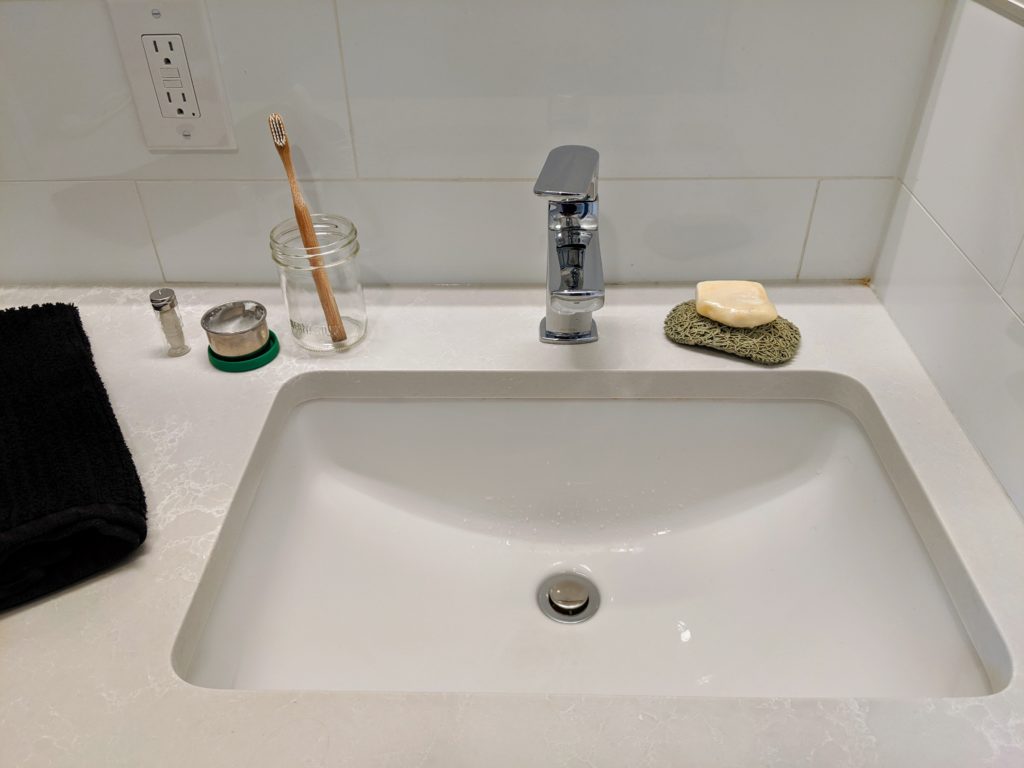
I hope some of this information has helped / inspired you. I plan on breaking this down in easier chunks over the coming months. I’d love to hear about your journey or recommendations, so please leave me a comment.
Recent Content
Green Parenting - Tips To Raising Environmentally Friendly Kids
It is more important now than ever to raise an environmentally conscious next generation. Children are the future so let's be sure to raise them with a respect of nature! To raise...
Thinking about buying a new (or used) car is a big decision for most people. It is one of the biggest purchases people make in terms of expense and ownership time. The options can be daunting...
